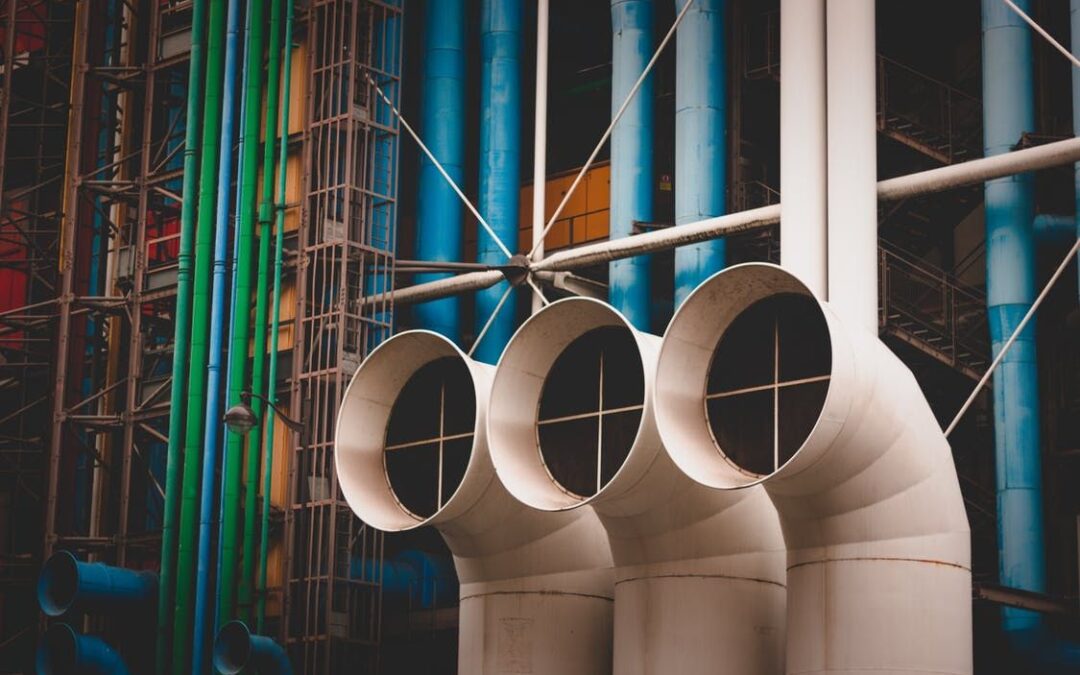Please click here to read Part 2: https://www.allianceengineering.ca/industry/efficient-commercial-building-operation-best-practices-and-resources/
Alliance Engineering has been providing a lot of information and guidance lately on efficient commercial building operations under COVID-19 and partial occupancy. We’ve provided advice on ways to prioritize protection and trust as well as high-level best practices and helpful resources. If you’re implementing these changes, you’ll no doubt have some questions that are more specific in scope. Let’s explore five frequently asked questions as it pertains to HVAC systems with respect to COVID-19 and possible infection according to ASHRAE.
1. What are the parameters for air changes per hour (ACH) and building filtration?
In terms of air change, it is recommended to have a minimum of 2ACH outdoor air and 2 ACH total air, although higher total air is desirable. For buildings with large volume spaces, calculate air changes based on a ceiling height of 10 feet. For supply air with temperatures above room temperature, calculate the minimum outdoor and total air ACH as 2ACH outdoor air divided by 0.8 ACH. Total and supply air temperatures should be kept no more than 8-9 degrees Celsius above room temperature to minimize air stratification and short-circuiting. The buildings should also have at least a MERV-13 or MERV-14 efficiency filtration system.
2. What temperature and relative humidity (RH) should a building run at?
The building’s temperature should generally be maintained between 21-24 degrees Celsius. Your building’s specific operating temperature setpoints should always reflect any existing licensing requirements for the space’s use and occupancy. For relative humidity, scientific literature generally suggests that RH should be between 40%-60% as this is the least survivable range for micro-organisms.
3. What is the proper amount of outside air needed for spaces where there was a known or potential infection?
If an infection is presumed or known, ventilation rates should be increased and maintained 24 hours a day and seven days a week. The maximum amount of outside air can be as high as 100% depending on outdoor conditions, what’s trying to be maintained indoors, and HVAC capacity and capability. A combination of increased filter efficiency and ventilation rates may be best to optimize air quality and help dilute COVID-19 or other infectious aerosols. Consult a local HVAC engineer or service professional to help make these operational changes. Make small changes iteratively so you can monitor the system for any unintended consequences and know where to make the necessary changes.
4. What is the proper level of negative pressure needed for a room with likely infection and how can this be measured?
In addition to the increased ventilation and outside air, you also want the room to have a negative airflow or pressure so that virus particles cannot drift into joining rooms and/or hallways. You can use a string or ribbon tied to the end of a pencil, open the door to the contaminated room, and hold the streamer up to the space. If the streamer blows into the contaminant room, then it is negative with respect to the other space. If not, airflow in the room should be adjusted by increasing the return or exhaust air in the room and maybe even partitioning some of the room’s supply air. Again, make small changes incrementally, monitor the space, and consult a local HVAC engineer or service professional when needed.
5. What HVAC considerations are there when using vaporized hydrogen peroxide (VHP) generators?
If choosing to use this technology, you’ll need to seal the HVAC system to the specific room being treated. After the decontamination, your VHP system should be set up to clear all vaporized hydrogen peroxide from the space. You’ll then need to confirm that the space has been completely cleared before having it used by people. Although VHP technology is useful, it may be better suited to equipment as opposed to room sterilization.
Please contact Alliance Engineering for more information on partial occupancy efficiency under COVID-19 with respect to HVAC systems and air filtration. We also recommend that you download ASHRAE’s 2020 Managing Your HVAC Systems to Help Mitigate the Spread of SARS-CoV-2 in Buildings PDF which provides extensive guidance on Building Readiness.

